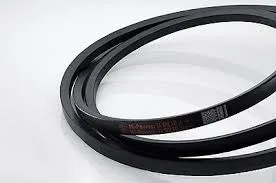- Arabic
- French
- Russian
- Spanish
- Portuguese
- Turkish
- Armenian
- English
- Albanian
- Amharic
- Azerbaijani
- Basque
- Belarusian
- Bengali
- Bosnian
- Bulgarian
- Catalan
- Cebuano
- Corsican
- Croatian
- Czech
- Danish
- Dutch
- Afrikaans
- Esperanto
- Estonian
- Finnish
- Frisian
- Galician
- Georgian
- German
- Greek
- Gujarati
- Haitian Creole
- hausa
- hawaiian
- Hebrew
- Hindi
- Miao
- Hungarian
- Icelandic
- igbo
- Indonesian
- irish
- Italian
- Japanese
- Javanese
- Kannada
- kazakh
- Khmer
- Rwandese
- Korean
- Kurdish
- Kyrgyz
- Lao
- Latin
- Latvian
- Lithuanian
- Luxembourgish
- Macedonian
- Malgashi
- Malay
- Malayalam
- Maltese
- Maori
- Marathi
- Mongolian
- Myanmar
- Nepali
- Norwegian
- Norwegian
- Occitan
- Pashto
- Persian
- Polish
- Punjabi
- Romanian
- Samoan
- Scottish Gaelic
- Serbian
- Sesotho
- Shona
- Sindhi
- Sinhala
- Slovak
- Slovenian
- Somali
- Sundanese
- Swahili
- Swedish
- Tagalog
- Tajik
- Tamil
- Tatar
- Telugu
- Thai
- Turkmen
- Ukrainian
- Urdu
- Uighur
- Uzbek
- Vietnamese
- Welsh
- Bantu
- Yiddish
- Yoruba
- Zulu
Th12 . 04, 2024 10:06 Back to list
steering belt
Understanding Steering Belts Function, Importance, and Maintenance
In the intricate world of automotive engineering, every component plays a crucial role in ensuring the efficiency and safety of a vehicle. Among these components, the steering belt, often overlooked, is essential for the smooth operation of the vehicle's steering system. This article explores the steering belt, its function, importance, and maintenance tips to ensure optimal performance.
What is a Steering Belt?
The steering belt, commonly known as the power steering belt, is a crucial part of the power steering system in vehicles. It is typically a serpentine belt that connects the engine's crankshaft to the power steering pump. The belt transfers mechanical energy from the engine to the power steering pump, which in turn generates hydraulic pressure to assist with steering.
Function of the Steering Belt
The primary function of the steering belt is to provide the necessary power for the steering assistance feature. When a driver turns the steering wheel, the power steering pump, driven by the belt, creates hydraulic pressure that helps move the steering gear and, consequently, the vehicle's wheels. This hydraulic boost reduces the effort required by the driver to turn the wheel, making driving easier and more comfortable, especially in difficult situations such as parallel parking or maneuvering through tight spaces.
Importance of the Steering Belt
The steering belt is vital for several reasons
1. Ease of Control Without a functioning steering belt, the power steering pump would not operate effectively, making the steering feel heavy and unresponsive. This can lead to driver fatigue, especially on long drives or during city traffic.
2. Safety A malfunctioning steering belt can compromise the entire steering system, potentially leading to loss of control. In situations where quick maneuverability is essential (such as avoiding an obstacle), this can be extremely dangerous.
3. Vehicle Longevity Regular maintenance of the steering belt can prevent premature wear and tear on the power steering components. This not only extends the life of the belt itself but also protects the power steering pump and other related parts.
steering belt

4. Cost Efficiency Addressing steering belt issues early on can save significant repair costs down the line. Replacing a worn or damaged belt is relatively inexpensive compared to repairing or replacing a power steering pump or other damaged components that might result from a failed belt.
Maintenance Tips for the Steering Belt
To ensure the longevity and effectiveness of the steering belt, regular maintenance is essential. Here are some practical tips
1. Regular Inspections Periodic checks of the steering belt for signs of wear, such as cracks, fraying, or glazing, can help identify issues before they become serious problems. Experts generally recommend inspecting the belt at each oil change or at least every 6,000 to 7,500 miles.
2. Proper Tension The steering belt should have the correct tension. A belt that is too loose can slip, leading to reduced power steering efficiency. Conversely, a belt that is too tight can strain the power steering pump and surrounding components. Consulting the owner’s manual for the correct tension specifications is crucial.
3. Listen for Noises Unusual noises, such as squealing or grinding sounds, when turning the steering wheel could indicate problems with the steering belt or pump. If you hear such sounds, it’s advisable to have the vehicle inspected by a professional.
4. Replacement Schedule Most manufacturers recommend replacing the steering belt every 50,000 to 100,000 miles, but this can vary based on driving conditions and the type of vehicle. Always refer to the owner’s manual for specific recommendations.
5. Professional Service When in doubt, it’s best to consult a certified mechanic. Professionals can provide insights and solutions that may not be apparent to the average driver, ensuring that your vehicle remains safe and fully operational.
Conclusion
The steering belt may be a small component in the grand scheme of a vehicle's operation, but its significance cannot be understated. Proper understanding, routine maintenance, and timely replacements play a vital role in ensuring that the steering system functions smoothly. By taking care of the steering belt, drivers not only enhance their driving experience but also prioritize safety and vehicle longevity. Remember, a well-maintained steering system is key to a confident and comfortable ride.
-
Korean Auto Parts Timing Belt 24312-37500 For Hyundai/Kia
NewsMar.07,2025
-
7PK2300 90916-T2024 RIBBED BELT POLY V BELT PK BELT
NewsMar.07,2025
-
Chinese Auto Belt Factory 310-2M-22 For BMW/Mercedes-Benz
NewsMar.07,2025
-
Chinese Auto Belt Factory 310-2M-22 For BMW/Mercedes-Benz
NewsMar.07,2025
-
90916-02660 PK Belt 6PK1680 For Toyota
NewsMar.07,2025
-
drive belt serpentine belt
NewsMar.07,2025

